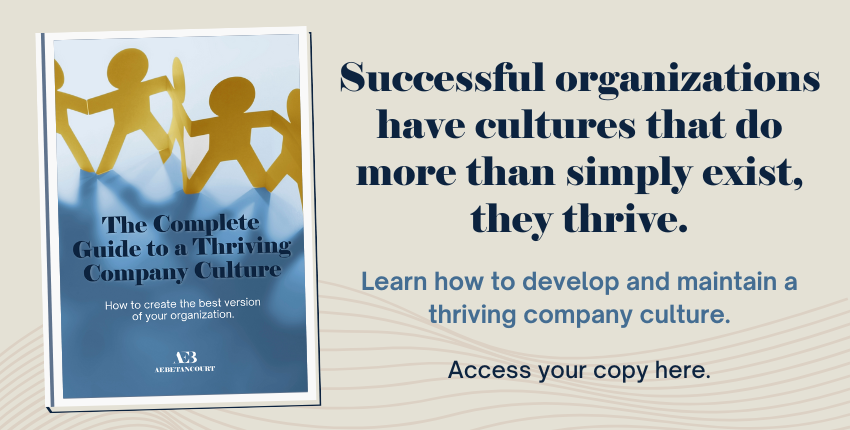The saying "Teamwork makes the dream work" is always true. When people work together, they can achieve amazing things. Using everyone's strengths in a united group allows for achievements that no one person could do alone. However, building a strong business team entails more than merely bringing people together; it requires a blend of creativity and perseverance.
Teamwork often serves as an underestimated catalyst for success in businesses. Without a well-coordinated team, companies may fall short of their potential. According to one study, 50% of organizations surveyed credit employee teamwork for aiding in achieving organizational goals.
In this blog, you'll discover key steps to create a strong business team. We'll cover defining roles, fostering diversity, enhancing communication, and promoting accountability. Understanding these strategies will help you build a collaborative and successful team, driving lasting success for your organization.
What Does a Strong Business Team Look Like?
- Shared Goal and Direction: Having a clear vision helps everyone know where they're going and work together toward the same goal.
- Curiosity and Adaptability: Being open to learning and quickly adjusting to changes helps teams succeed in fast-paced environments.
- Trust and Commitment: Trust among team members encourages collaboration and dedication to achieving the team's goals.
- Diversity and Inclusivity: Different backgrounds and perspectives contribute to better problem-solving and creativity while making sure everyone feels valued and included.
- Open Communication: Honest and open communication builds trust, resolves conflicts, and encourages helpful feedback within the team.
- Complementary Skill Sets: Having a diverse set of skills and expertise ensures that all tasks are covered effectively and promotes teamwork.
10 Strategies That Will Build a Strong Business Team
From defining roles to promoting diversity, there are 10 practical steps to building a supportive and productive team.
1. Establishing Company Culture
Company culture shapes how people behave and interact within an organization. This is especially important in remote work environments after the pandemic, where building inclusivity is crucial for keeping teams productive and united. A strong company culture fosters a sense of belonging and shared purpose among team members, leading to collective success.
2. Defining Roles and Responsibilities
Clearly defining roles within a team is key to reducing confusion and improving efficiency. When each team member knows what they are responsible for, it minimizes mistakes and boosts productivity. Offering opportunities for growth and advancement also keeps team members motivated and dedicated to their roles, creating a sense of purpose within the team.
3. Maximizing Skills
Utilizing the strengths of each team member is essential for maximizing overall team performance. Recognizing and using these strengths not only improves productivity but also fosters a culture of appreciation and empowerment. Investing in learning and development programs and providing paths for career growth show commitment to team members' personal and professional advancement, leading to higher engagement and retention rates.
4. Embracing Experimentation
Encouraging innovation and experimentation is crucial for continuous improvement within a team. By promoting risk-taking and brainstorming sessions, teams can explore new ideas and approaches, promoting creativity and adaptability. Learning from these experiments allows teams to evolve and succeed in changing circumstances, ensuring long-term effectiveness.
5. Promoting Diversity
Valuing diverse perspectives and inclusivity within a team is vital for driving innovation and collaboration. Embracing different viewpoints enhances problem-solving skills and creates a culture of respect and cooperation. Ultimately, diversity leads to better team outcomes and improved decision-making, positioning the team for success in a dynamic business environment.
6. Stay Accountable
Creating a culture of accountability is necessary for building trust and reliability within a team. When each team member takes responsibility for their actions, it promotes commitment and integrity. Leading by example and encouraging open communication and feedback are essential for fostering accountability, and promoting transparency and respect within the team.
7. Enhancing Communication
Effective communication is crucial for successful teamwork, enabling transparency and collaboration. Clear communication channels and role clarification ensure smooth information flow, reducing misunderstandings and conflicts. Promptly resolving conflicts strengthens team dynamics, creating a supportive and inclusive environment where everyone's voice is valued.
8. Cultivate Strong Leadership
Effective leadership guides teams toward success and inspires them to reach their full potential. Leaders who demonstrate commitment, adaptability, and accountability set the tone for the team, and create space for continuous improvement. Investing in leadership development ensures leaders have the skills to effectively manage and support their teams, driving organizational performance and success.
9. Creating a Desirable Workplace
Building a desirable workplace involves defining a compelling Employee Value Proposition (EVP) that attracts and retains top talent. Offering competitive benefits, growth opportunities, and a positive culture are essential for attracting and retaining employees. Prioritizing employee well-being and satisfaction creates an environment where employees feel valued, motivated, and empowered to do their best work.
10. Rewarding Good Work
Recognizing and rewarding employee contributions is essential for creating a culture of appreciation and engagement within the team, as well as boosting employee morale. Providing sincere feedback and regular recognition boosts morale and reinforces desired behaviors. By celebrating success, organizations inspire greater commitment and dedication among team members, driving overall team performance and success.
The Key Takeaway
Creating a strong business team is a journey that takes time and dedication. While Rome wasn’t built in a day, and neither is a high-performing business team, there are actionable steps you can take to progress toward that goal. By embracing the core traits of a robust team and implementing the practical strategies outlined in The Complete Guide to a Thriving Company Culture, organizations can cultivate a culture of collaboration, innovation, and excellence. It's important to remember that building a strong team is an ongoing process of growth and adaptation. With persistence and commitment, any team can achieve remarkable success.








